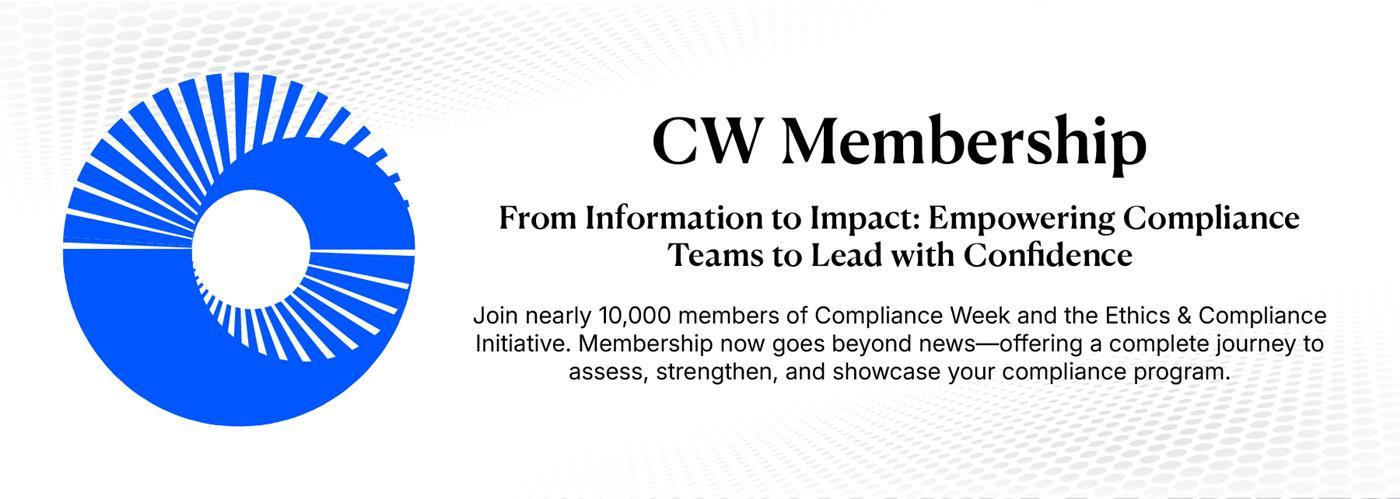- Home
-
News
- Back to parent navigation item
- News
- National Compliance Officer Day 2025
- Accounting & Auditing
- AI
- AML
- Anti-Bribery
- Best Practices
- Boards & Shareholders
- Cryptocurrency and Digital Assets
- Culture
- ESG/Social Responsibility
- Ethics & Culture
- Europe
- Financial Services
- Internal Controls
- Regulatory Enforcement
- Regulatory Policy
- Risk Management
- Sanctions
- Surveys & Benchmarking
- Supply Chain
- Third Party Risk
- Whistleblowers
- Opinion
- Benchmarking
- Certification
- Events
- Research
- Awards
-
CW Connect
- Back to parent navigation item
- CW Connect
- Sign In
- Apply
- Membership
‘This is where we are now’: Cyber environment calls for continuous monitoring
By  Adrianne Appel2023-02-24T20:10:00
Adrianne Appel2023-02-24T20:10:00

Securing your organization’s private data when vendors have access to it means managing relationships from beginning to end, panelists at Compliance Week’s virtual Cyber Risk and Data Privacy Summit agreed.
It’s essential to monitor “the entire life cycle of the relationship with the third parties, from onboarding to offboarding, birth to death,” said David Kessler, vice president and associate general counsel, IT and cybersecurity at BAE Systems, during a panel discussion.
McKenzee McCammack, regional compliance manager at American Express Global Business Travel, said vendor management at her company, which holds large amounts of personal customer data from passports to dietary restrictions, means scrutinizing potential vendors about what security measures they have in place.
THIS IS MEMBERS-ONLY CONTENT
You are not logged in and do not have access to members-only content.
If you are already a registered user or a member, SIGN IN now.
Related articles
-
 Premium
PremiumBiden cyber strategy plan calls for big businesses to step up
2023-07-20T18:37:00Z By Adrianne Appel
The “biggest, most capable, and best-positioned” businesses must assume a greater share of mitigating cyber risks, the White House said in announcing the National Cybersecurity Strategy Implementation Plan.
-
 News Brief
News BriefCISA pilot program seeks to bolster ransomware preparedness
2023-03-15T19:54:00Z By Jeff Dale
The Cybersecurity and Infrastructure Security Agency announced a pilot program designed to help critical infrastructure entities vulnerable to cyberattacks mitigate a ransomware incident before it occurs.
-
 Premium
PremiumCloud ‘not a silver bullet’ for security
2023-02-24T21:33:00Z By Aly McDevitt
A panel of cyber experts and a chief compliance officer in financial services discussed the business risks, threat vectors, and vendor ‘gotchas’ associated with transitioning to a cloud provider at CW’s virtual Cyber Risk & Data Privacy Summit.
More from Cybersecurity
-
 News Brief
News BriefU.K. says company boards need to worry more about cybersecurity risks
2025-04-08T16:47:00Z By Aaron Nicodemus
The U.K. government wants directors and boards of directors to become more actively involved in cybersecurity risks facing public and private companies, as the world faces “alarming” threats from criminal gangs and malicious nation-states. Though many organizations take cybersecurity seriously, the U.K. government says they do not place management of ...
-
 Premium
PremiumNavigating compliance: A guide for small teams to tackle CMMC
2025-03-28T14:22:00Z By Thomas Graham, CW guest columnist
Many small organizations within the Defense Industrial Base are struggling to meet the rigorous requirements validated through the Cybersecurity Maturity Model Certification, writes Thomas Graham, CISO at Redspin. If you haven’t been tracking it closely, CMMC was finalized in October, with an effective date of December 16, 2024.
-
 Premium
PremiumFinancial crime in the shadows of the dark web
2025-02-10T15:27:00Z By Rezaul Karim, CW guest columnist
The dark web has been depicted as a long-standing hub for crimes, where illegal activities such as drug dealing, financial fraud, weapon sales, murder for hire, stolen credit cards, and ransomware gags are easily accessible to the public.
- Terms and Conditions
- Privacy Policy
- Do Not Sell My Info
- © 2025 Compliance Week
Site powered by Webvision Cloud






